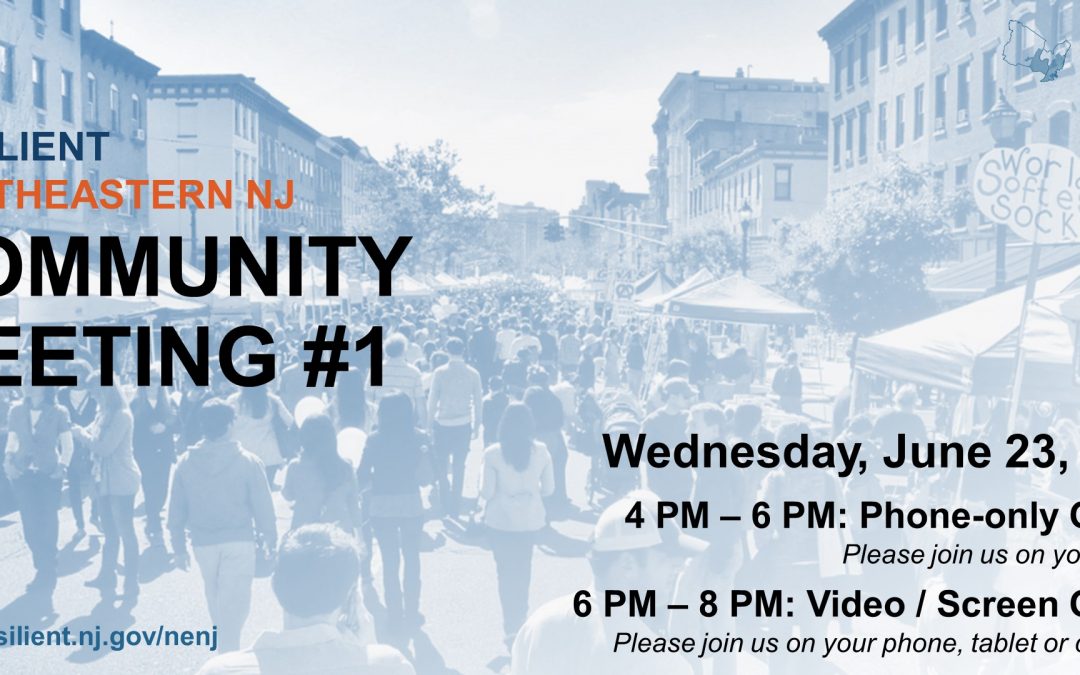At the June 23rd, 2021 meetings, community members of Jersey City, Newark, Hoboken, and Bayonne shared feedback about community vision, priorities for reducing flooding, places to protect from flooding, important factors to consider when evaluating possible solutions, and more! We held a phone-only meeting from 4 to 6pm and a virtual meeting from 6 to 8pm, with live Spanish and Portuguese translation available during both, and American Sign Language available for the virtual meeting. The feedback from the meetings will be used to guide the development of an action plan to address current and future flood risks in the region.
WHAT DID WE HEAR?
All the feedback that we have heard so far is compiled in this virtual board. We invite you to explore the board and add your feedback! Instructions for adding comments are at the top of the board.
What we value: The Northeastern New Jersey region is made up of diverse and vibrant communities with accessibility to regional mass transit, restaurants, and arts and cultural activities. In these dense cities, access to parks and open space, especially waterfront walkways and parks, is incredibly valuable.
Community vision: While there are already many great parks and community spaces, community members want to see more parks and greenery and a focus on incorporating resilient and sustainable design into these new spaces. Community members are excited about green infrastructure and the opportunity to incorporate nature-based solutions into new design. Decreasing traffic and congestion, adding more bike lines, and increasing connectivity and mobility between the cities are important transportation improvements that community members would like to see.
Flooding experiences: While this project is working to address flooding in the long-term through 2070, flooding is already a common experience across the region today, both during coastal storms like Hurricane Sandy or more frequent rainfall events. Across the region, frequent flooding during intense rainfall events is related to overwhelming of the stormwater sewer infrastructure. Flooding causes street closures and car accidents that disrupt travel and parking. Residents have had to deal with power outages and costs to repair damages to cars and homes. Community members are concerned about increasing costs of flood insurance and the continuation of development within flood areas. The health hazards of toxic flooding, when flood waters mix with pollutants or combined sewers back-up, are a significant concern. Some residents reported regular impacts to daily life from flooding. For example, one community member reported basement flooding so common that the clothes washer is elevated. Still others reported flooding that comes from the roofs of other homes during heavy rainfall and might not be represented on flood maps.
We also heard feedback about specific community assets (like facilities or community spaces), that are important to community members, and we also talked about the most important factors to consider, or evaluation criteria, that should be used to compare alternatives for reducing flooding.
MISSED THE MEETINGS, OR WANT TO SHARE ADDITIONAL FEEDBACK?
Please visit our virtual board and add your own thoughts. Instructions for adding comments are at the top of the board.
You can also check-out the meeting slide deck or recordings of the presentation linked below.
View the presentation slide deck here
Recordings
4 to 6 PM Presentation
4 to 6 PM Report Out
6 to 8 PM Presentation
6 to 8 PM Report Out
Español
Português
Attended the meeting and have thoughts on how it went?
Take our meeting survey here.

